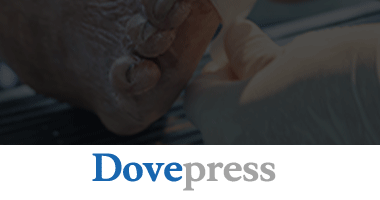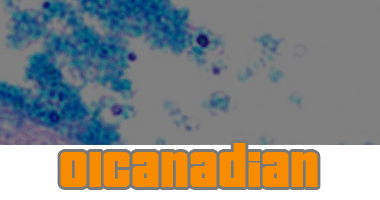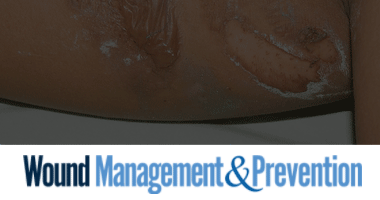F Mohamad, Raghad R Alzahrani, Ahlam Alsaadi, Bahauddeen M Alrfaei, Alaa Eldeen B Yassin, Manal M Alkhulaifi, Majed Halwani


F Mohamad, Raghad R Alzahrani, Ahlam Alsaadi, Bahauddeen M Alrfaei, Alaa Eldeen B Yassin, Manal M Alkhulaifi, Majed Halwani



Company expands product portfolio with focus on addressing surgical site infections in plastic reconstructive surgery
MALVERN, Pa., March 03, 2022 (GLOBE NEWSWIRE) — TELA Bio, Inc. (NASDAQ: TELA), a commercial-stage medical technology company focused on providing innovative soft-tissue reconstruction solutions that optimize clinical outcomes by prioritizing the preservation and restoration of the patient’s own anatomy, today announced the commercial launch of its SiteGuard No Rinse Antimicrobial Solution for use in plastic reconstructive surgery.
SiteGuard utilizes Next Science’s proprietary XBIO® Technology that supports surgical site and post-operative infection control by addressing the biofilms that make bacteria more resistant to traditional antimicrobial agents, disinfectants, and host immune defenses. XBIO Technology deconstructs biofilm, destroys the bacteria enveloped in the solution, and defends against bacterial recolonization. There is no known bacterial resistance to XBIO Technology, and the no-rinse delivery allows the solution to provide over five hours of ongoing protection against bacterial biofilms with exceptional rates of pathogen removal.
“SiteGuard is a complementary technology that we believe enhances our mission to deliver a portfolio of next-generation soft-tissue solutions that are both clinically effective and economically impactful,” said Antony Koblish, President and CEO of TELA Bio. “Early test market experience with SiteGuard has been encouraging, and we look forward to broadening awareness and usage of the technology nationwide.” … read more
Delayed wound healing can cause significant issues for immobile and ageing individuals as well as those living with co-morbid conditions such as diabetes, cardiovascular disease, and cancer. These delays increase a patient’s risk for infection and, in severe cases, can result in the formation of chronic, non-healing ulcers (e.g., diabetic foot ulcers, surgical site infections, pressure ulcers and venous leg ulcers). Chronic wounds are very difficult and expensive to treat and there is an urgent need to develop more effective therapeutics that restore healing processes. Sustained innate immune activation and inflammation are common features observed across most chronic wound types. However, the factors driving this activation remain incompletely understood. Emerging evidence suggests that the composition and structure of the wound microbiome may play a central role in driving this dysregulated activation but the cellular and molecular mechanisms underlying these processes require further investigation. In this review, we will discuss the current literature on: 1) how bacterial populations and biofilms contribute to chronic wound formation … read more
Founded by scientist Matthew Myntti, the company develops products to reduce biofilm-based infections, which can be fatal.
As a scientist at Medtronic’s Jacksonville office working on chronic infections, Matthew Myntti said he began to understand the life-threatening nature of chronic wounds, and the infections that come with them.
He left the medical technology company in 2012 to start his own research focused on treating chronic wounds and keeping them from becoming infected … read more
Optimizing treatments to rapidly heal individual chronic wounds requires assessing multiple factors and implementing effective treatments to correct the problems that impair healing as described in the TIMERS guidelines, which emphasizes reducing the wound biofilm bioburden.
There is growing concern regarding the treatment of infection, caused by the rise of antimicrobial resistance. This position document looks at current treatment approaches to identifying and treating biofilm in wounds, focusing on the mechanism of action and role of non-medicated wound dressings (NMWDs) within antimicrobial stewardship practices and evidence that supports their effectiveness … Download
My goal of care with this six‑week‑old wound on this very anxious patient was to support healing while limiting aggressive debridement to try to mitigate her anxiety. Therefore, the wound hygiene protocol was initiated … I first cleanse the full wound area, including the peri-ulcer skin, with a noncytotoxic antiseptic wound cleanser. Then, I sharply debrided that hard, a sharp cap that you see, and dry fatty necrosis as tolerated by the patient … Then, I refashion the rolled wound edges by abrading the epidermis to promote flattening of the epiboly. Then, I ordered daily dressing changes within an enzymatic debrider … The wound hygiene treatment protocol promotes attention to all aspects of a wound’s healing … read more
Bacteria and biofilm plague chronic wounds, impair the healing process, and can increase the risk of infection and antibiotic overprescribing. Fluorescence imaging of bacterial burden (MolecuLight i:X) is the only point-of-care solution to visualize the presence of significant bacterial burden in wounds. This information, when added to standard of care, supports informed clinical decision making and more proactive bacterial management practices. This point-of-care imaging technology is quickly becoming a standard in wound care … View webinar start time in your timezone.
Bacteria and biofilm plague chronic wounds, impair the healing process, and can increase the risk of infection and antibiotic overprescribing. Fluorescence imaging of bacterial burden (MolecuLight i:X) is the only point-of-care solution to visualize the presence of significant bacterial burden in wounds. This information, when added to standard of care, supports informed clinical decision making and more proactive bacterial management practices. This point-of-care imaging technology is quickly becoming a standard in wound care … View webinar start time in your timezone
Wounds represent a serious, and often overlooked, health problem in the global world. Importantly, if left untreated, several complications arise including infection, amputation, and long-term morbidity. The wound treatment has placed a massive financial burden on the health-care system, with serious and disturbing consequences for the affected patients. The development of new treatments that enhance the wound healing process and prevent, or limit, scarring is needed. Impaired wound healing is characterized by a loss of synchronization of the molecular interactions required for skin tissue repair.4 Six million patients a year are affected by wounds, costing the health-care system an estimated $25 billion dollars. Wound infection is the most common impediment to wound healing, leading to increase the morbidity and mortality among patients … read more
Health care is at a perilous crossroads. “[D]eaths from drug-resistant infections are set to skyrocket to over 10 million per year worldwide and could cost the global economy as much as $100 trillion by 2050,” a STATISTICA article reports. The same concerning fact is stressed by United States public health officials, who agree that “antimicrobial resistant pathogens (AMR) threaten everyone”.Both reports suggest a grim future of consequences from bacterial resistance, with U.S. officials believing AMR is occurring at a rate of more than 2.8 million antibiotic resistant infections in the U.S. each year, ending in a heavy economic price and over 35,000 deaths annually. The Centers for Disease Control and Prevention (CDC) believes “no one can completely avoid the risk of resistant infections, with some people at greater risk than others.” Eye-opening research suggests at least 80% of these infections are biofilm related … read more
Technology at the Symposium on Advanced Wound Care and Wound Healing Society Spring Conference
Harbor MedTech, a commercial-stage regenerative medicine company delivering innovative biologic wound-healing products, presented a Poster on Architect®, its advanced wound-healing product, and BriDGE®, its unique technology.
The scientific poster, “Stabilized Collagen Matrix Dressing Improves Macrophage Recruitment and Wound Epithelialization” was presented at the Symposium on Advanced Wound Care and Wound Healing Society Spring Conference, April 5 – April 9, 2017, in San Diego, California and was selected for the WHS Industrial Research & Development Poster Award Competition.
The poster was a presentation of ongoing research, led by Dr. Chandan K. Sen, Executive Director of Ohio State University’s Comprehensive Wound Center. Dr. Sen’s work involves a variety of in vitro and animal studies that initially describe the mechanism of action of Architect, a stabilized collagen matrix, for the treatment of a variety of wound types. These studies suggest that Architect may serve as a scaffold for cells within the wound microenvironment and may provide effective defenses against bacterial colonization and wound infection. In vivo, application of Architect stimulated … read more
For wounds to heal, it is essential that macro- and microcirculation is restored in the surrounding tissue (Niinikoski et al, 1991; Gottrup, 2004a). One of the most urgent requirements is oxygen, as it is critically important for the reconstruction of new vessels and connective tissue, and also enables resistance to infection … View PDF
The International Wound Infection Institute (IWII) is an organisation of
volunteer interdisciplinary health professionals dedicated to advancing
and improving practice relating to prevention and control of wound
infection. This includes acute wounds (surgical, traumatic and burns)
and chronic wounds of all types, although principally chronic wounds of
venous, arterial, diabetic and pressure aetiologies.
Wound infection is a common complication of wounds. It leads to delays in wound
healing and increases the risk of loss of limb and life. Implementation of effective
strategies to prevent, diagnose and manage, is important in reducing mortality and
morbidity rates associated with wound infection.
This second edition of Wound Infection in Clinical Practice is an update of the first edition
published in 2008 by the World Union of Wound Healing Societies (WUWHS). The
original document was authored by leading experts in wound management and endorsed
by the WUWHS. The intent of this edition is to provide a practical, updated resource that
is easy-to-use and understand.
Given the complexity of biofilm in lower extremity wounds, these authors offer a closer look on how biofilm develops, keys to eradicating biofilm and emerging modalities that may have an impact in the future.
We all encounter biofilms on a regular basis in our practices. A biofilm is a complex polymicrobal community of bacteria and fungi that develops on foreign materials, necrotic debris, exposed bone, and within the bed of chronic wounds. When James and colleagues examined the biopsies of 50 chronic wound beds, 60 percent contained a biofilm.
Planktonic or free-floating bacteria are more aggressive and divide more rapidly. Changes in gene expression allow them to secrete hydrolase enzymes and exotoxins, resulting in more rapid local tissue invasion. As a bacterial colony develops, environmental stimuli induce the cells to engage in quorum sensing, a gradient-based recruitment strategy used to summon additional bacteria to the developing biofilm and alter the phenotypic expression of bacteria within the community. Free-floating planktonic bacteria adhere to the wound bed using very weak molecular interactions … read more
The incidence, cost, morbidity, and mortality associated with non-healing of chronic skin wounds are dramatic. With the increasing numbers of people with obesity, chronic medical conditions, and an increasing life expectancy, the healthcare cost of non-healing ulcers has recently been estimated at $25 billion annually in the United States. The role played by bacterial biofilm in chronic wounds has been emphasized in recent years, particularly in the context of the prolongation of the inflammatory phase of repair.
Rapid high-throughput genomic approaches have revolutionized the ability to identify and quantify microbial organisms from wounds. Defining bacterial genomes and using genetic approaches to knock out specific bacterial functions, then studying bacterial survival on cutaneous wounds is a promising strategy for understanding which genes are essential for pathogenicity.
When an animal sustains a cutaneous wound, understanding mechanisms involved in adaptations by bacteria and adaptations by the host in the struggle for survival is central to development of interventions that favor the host.
Characterization of microbiomes of clinically well characterized chronic human wounds is now under way. The use of in vivo models of biofilm-infected cutaneous wounds will permit the study of the mechanisms needed for biofilm formation, persistence, and potential synergistic interactions among bacteria. A more complete understanding of bacterial survival mechanisms and how microbes influence host repair mechanisms are likely to provide targets for chronic wound therapy.
Complex wounds, Events, Infection | Schulke
TIME to face the challenge of wound infection.
This microsite follows on from the plenary session,
chaired by Kath Vowden at the Wounds UK conference, Harrogate 2016.
Click here to view the microsite

Biofilm is a complex microbial community containing self- and surface-attached microorganisms that are embedded in an extracellular polymeric substance.1,2 The extracellular polymeric substance is a primarily polysaccharide protective matrix synthesized and secreted by the microorganisms that attaches the biofilm firmly to a living or non-living surface. This protective covering does not allow the body’s immune system to recognize the presence of the microorganism; therefore, the bacteria evade an immune response, avoid detection by standard diagnostic techniques, and avoid destruction by standard treatments. Because of the tenacity of the attached biofilm, the microoganisms are able to resist physical forces, such shear, and are able to withstand nutrient and moisture deprivation, altered pH, and the impact of antibiotics and antiseptics. For the purposes of this discussion we break down the formation and actions of biofilms and discuss their impact on wound healing … read more